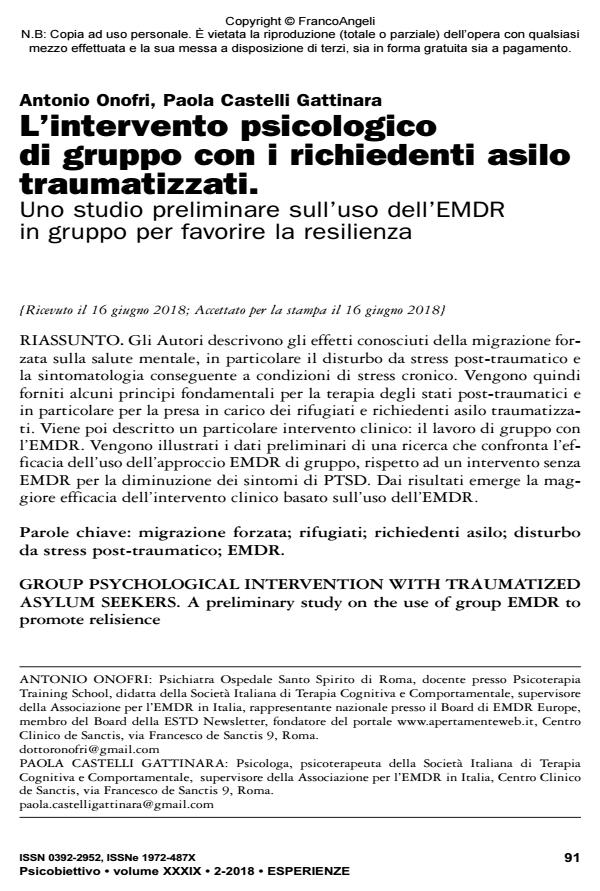Group psychological intervention with traumatized asylum seekers. A preliminary study on the use of group EMDR to promote relisience
Journal title PSICOBIETTIVO
Author/s Antonio Onofri, Paola Castelli Gattinara
Publishing Year 2018 Issue 2018/2
Language Italian Pages 10 P. 91-100 File size 145 KB
DOI 10.3280/PSOB2018-002006
DOI is like a bar code for intellectual property: to have more infomation
click here
Below, you can see the article first page
If you want to buy this article in PDF format, you can do it, following the instructions to buy download credits

FrancoAngeli is member of Publishers International Linking Association, Inc (PILA), a not-for-profit association which run the CrossRef service enabling links to and from online scholarly content.
The authors describe the known effects of forced migration on mental health, in particular Post-Traumatic Stress Disorder and the symptoms deriving from chronic stress. The paper provides some fundamental principles for the treatment of post- traumatic conditions and specifically for traumatized refugees and asylum seekers. A particular clinical intervention is then described: group therapy with EMDR. A pilot study was conducted to assess the efficacy of EMDR group therapy to reduce PTSD symptoms. An experimental group was confronted with a control group. The results show the greater effectiveness of clinical intervention based on the use of EMDR.
Keywords: Forced Migration; Refugees; Asylum Seekers; Disorder; Post- Traumatic Stress; EMDR.
Antonio Onofri, Paola Castelli Gattinara, L’intervento psicologico di gruppo con i richiedenti asilo traumatizzati. Uno studio preliminare sull’uso dell’EMDR in gruppo per favorire la resilienza in "PSICOBIETTIVO" 2/2018, pp 91-100, DOI: 10.3280/PSOB2018-002006